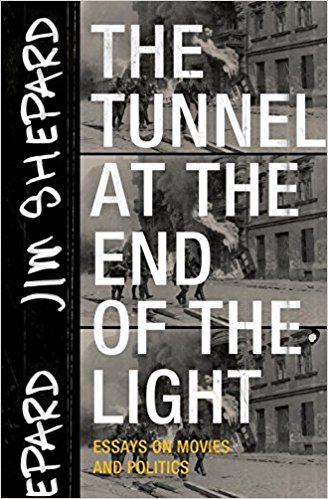Faculty Picks: Thien, Shepard, Bellow
Robin Wasserman-- I've spent my summer lurking in Parisian cafes, drinking infuriatingly tiny cups of so-called coffee and trying not to feel like too much of a cliche when I pull out my journal and surreptitiously scrawl down some profound thought. (Said profundity slightly limited by the aforementioned caffeine shortage.) I'm a promiscuous but loyal customer: one cafe for writing, one cafe for critiquing student work, one cafe for hot chocolate, and one cafe, in the shadow of my favorite Parisian church (and, conveniently, favorite Parisian crepe stand), for reading. The last one is obviously the best one, but it's upped the stakes a bit: A book has to be pretty great to distract me from the wafting scent of nutella. Fortunately, I had Madeline Thien's Do Not Say We Have Nothing, one of the most absorbing and ambitious novels I've read this year. A story within a story within a story about the Cultural Revolution and the struggle of art and artists to survive in the face of oppression, Thien's book is brutally beautiful and a reminder that making art is both a privilege and a necessity.
Justin Taylor-- This September Tin House will publish Jim Shepard’s first collection of nonfiction, The Tunnel at the End of the Light: Essays on Movies and Politics. Shepard’s cinephilia has been well-represented in his fiction (cf. his stories “Gojira, King of the Monsters”, “Boys Town”, “The Creature from the Black Lagoon”, his novel Nosferatu) so it’s a treat to read his wonkish and acerbic takes on the classics: “Badlands, and the ‘Innocence’ of American Innocence”, “Fool me Twice, Shame on Me: Saving Private Ryan and the Politics of Deception.” The essays first appeared in The Believer in the early and mid aughts, so the “politics” of the subhead largely concern the depravities of the second Bush administration, which periodizes the book but hardly dates it. Indeed, Shepard’s meditations on “the power and resilience of the lies we tell ourselves as a collective” have grown—if anything—even more dispiritingly prescient than they were a decade ago. I was going to say this is all less grim than it sounds, but it isn’t. What it is is smart, earnest, and unsparing.
For nonfiction students in particular, these essays are a solid model for a certain kind of personal-critical essay that puts engagement with a published work of art at its center but is not a "review" of the work in question. And for all Mountainview students, the essays have much to teach in terms of how to approach your close reading assignments and craft papers. Though the essays are polemical and make no pretense of "objectivity" (why would they? how could they? they're framed as persuasive arguments) Shepard is a rigorous of reader of texts--which in this case happen to be films and not books, but the point is the same. He is meticulous in his inspection of the material, noting craft elements like camera angles and minutes of screen time for a given character the way you might keep track of point of view shifts or the page-lengths of a given scene. Once he understands what something is, it's only natural to ask how it got that way, and to explore whether--and why--it succeeds or fails on the terms it has set for itself.
Benjamin Nugent-- For years I’ve considered myself a short-story writer, and I have just this month discovered Saul Bellow’s short stories. This is like considering yourself a drummer, and then, after years on the road, finally getting around to checking out Led Zeppelin. Track after track, you go, “Wait, what?” First you are filled with joy. Then you are filled with shame.
Here’s the businessman protagonist of Bellow’s “A Silver Dish,” published in The New Yorker in 1978:
"Woody, now sixty, fleshy and big, like a figure for the victory of American materialism, sunk in his lounge chair, the leather of its armrests softer to his fingertips than a woman’s skin, was puzzled and, in his depths, disturbed by certain blots within him, blots of light in his brain, a blot combining pain and amusement in his breast (how did that get there?) Intense thought puckered the skin between his eyes with a strain bordering on headache."
We’re outside the guy, looking at him, and we’re also inside him, feeling what it’s like to be him, at more or less the same time. As a bonus, we’re considering his symbolic significance. (Bellow is interested in the fact that Woody looks “like a figure for the victory of American materialism” but he’s also determined to make Woody more than a figure, to make him flesh.) When you’re writing short, it helps to be able to dig into a character quickly, the way Led Zeppelin digs into a rhythm. Bellow does it fast.



